Creating a Cozy Home: Hygge Design Principles for Comfort
In today's busy world, making our homes feel cozy and peaceful is more important than ever. And that's where Hygge comes in – it's a way of designing your home to make it warm and inviting. In this article, we'll explore what makes Hygge special and share easy tips on how you can make your home feel comfy and calming. Let's discover the joy of simplicity, appreciate small moments, and turn your home into a super cozy retreat!
In this blog you will learn:
- Understanding Hygge
- Where Hygge comes from
- What Hygge is all about
- Hygge colors & textures
- How Hygge stands out
- Incorporating Hygge into home design
Understanding Hygge

Hygge (pronounced: hoo-guh) is a Danish way of making things homelike. It's all about feeling happy and snug in your everyday life. Let’s get to know it better!
Where Hygge comes from
Hygge has its roots in Denmark, a country in Northern Europe. And it isn't a new thing – Hygge has been a part of Danish life since the 18th century. Back then, Denmark faced political turmoil and social unrest. This made life quite difficult for many. Hygge emerged as a way for people to find happiness in simple things. For instance, a warm fire, shared meals, and close company brought a sense of comfort during those trying times.
What Hygge is all about
Hygge is like a secret recipe to coziness with only four main ingredients:
- Comfort. Think soft pillows and warm socks – anything that makes you feel snug.
- Simplicity. It's about keeping things simple and not too fancy.
- Connection. Hanging out with friends, chatting, or enjoying time with family – it's all about creating an environment where you feel close to the people you care about.
- Atmosphere. Creating a cozy vibe with soft lights, candles, and relaxing music.
Hygge colors & textures
In the heart of Hygge lies a tale woven from hues and textures:
- Neutral palettes. Soothing tones of whites, creams, and beiges form the foundation of Hygge. These hues create a serene canvas, allowing other elements to stand out.
- Warm earthy tones. Warm earthy colors like soft browns, gentle greys, and muted greens that evoke feelings of nature and tranquility. These hues also invite calmness into your space.
- Soft fabrics. Soft textures – cotton, wool, faux fur, and knits – add layers of comfort and tactile appeal to your decor.
- Natural materials. Natural textures like wood, stone, or rattan create an organic feel that connects your space with nature.
Also, take into account seasonal adaptations:
- Seasonal color palettes. Explore how to adapt your color scheme and textures to different seasons to maintain a cozy ambiance year-round. For instance, warm tones for winter, and brighter hues for spring. Also take into account different seasonal holidays – for instance, Christmas.
- Textural additions. Switch up textures seasonally – lighter fabrics for warmer months and heavier, cozier textures for colder times.
How Hygge stands out
Unlike other design ideas that might focus only on how things look, Hygge is more about how things feel. It's not just about making a place pretty. It's about making it super cozy and welcoming for everyone.
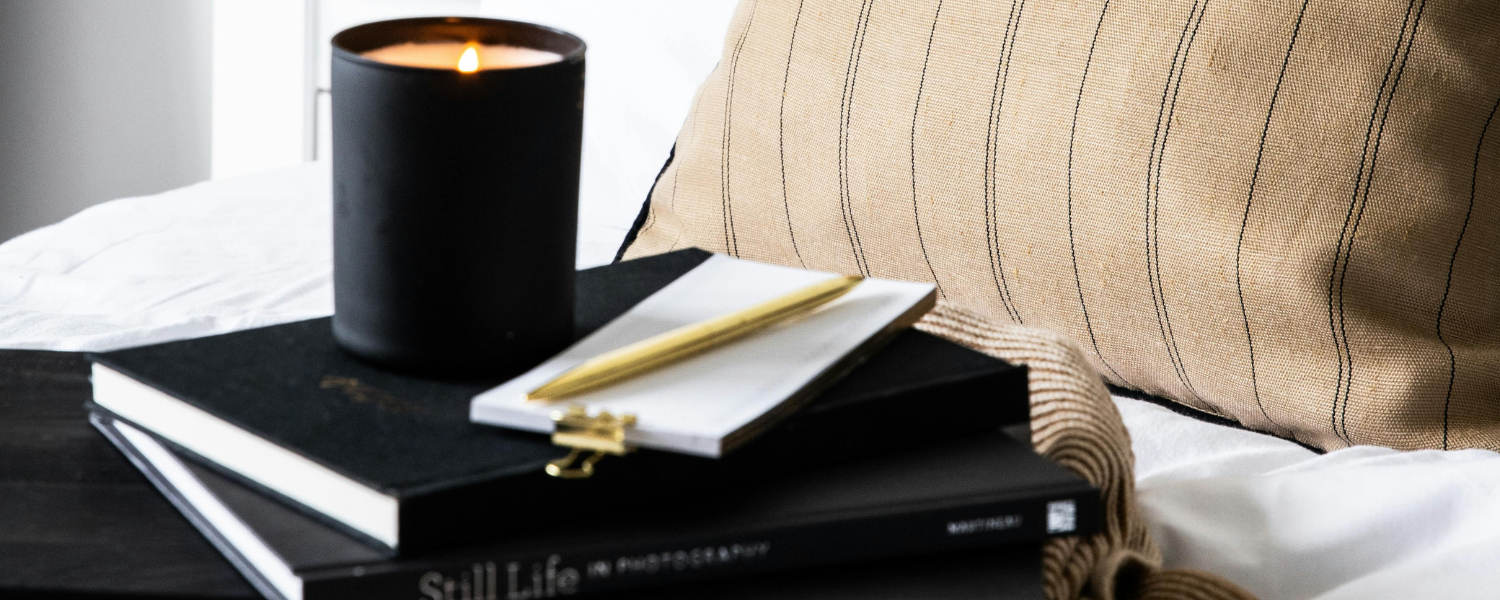
Incorporating Hygge into home design
In the heart of every home lies the essence of comfort. To make this feel more visible and tactile, get to know how to incorporate Hygge principles into your home interior.
Furnishings and decor
Imagine your favorite spot – a wonderfully cozy chair wrapped in the softest blanket. It's a great way to break free from thinking in terms of 'furniture' or 'decor' and instead combine them seamlessly into a system that suits you perfectly. To embrace Hygge, think of the aspects below.
Soft textures and warm materials
- Layer different textures. For instance, a chunky knit throw blanket on a leather armchair. Or a sheepskin rug on a hardwood floor. This will undoubtedly create a cozy and inviting atmosphere.
- Mix cushions in various fabrics – cotton, velvet, or faux fur – to add depth and comfort to your seating area.
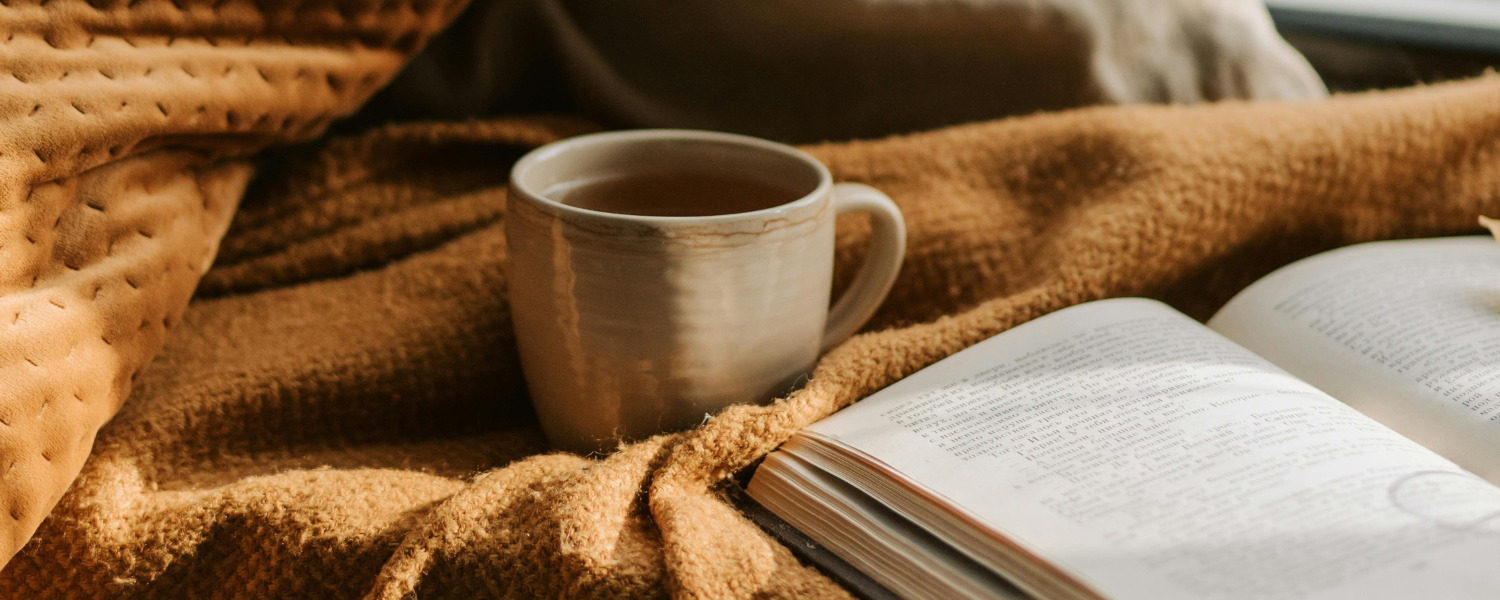
Cozy furniture arrangement
- Create conversation areas by positioning furniture in a way that encourages face-to-face interaction. Place chairs and sofas around a focal point like a coffee table or fireplace.
- Opt for oversized, comfortable seating options like deep sofas or large armchairs for relaxation and lounging.
Simplifying and decluttering spaces
Picture a room where there's only what you need, nothing extra to clutter your space. That's the magic of simplicity and it goes perfectly with Hygge principles!
Minimalist approach
- Choose furniture pieces with clean lines and multifunctional capabilities. This allows to maximize space and minimize clutter.
- Utilize built-in storage solutions or furniture with hidden compartments. It’s a great way to keep items out of sight and maintain a clean aesthetic.
Importance of organization
- Invest in storage baskets, decorative boxes, or wall-mounted shelves. This way, you will keep commonly used items organized and easily accessible.
- Implement a "one in, one out" rule for items. This means, that when bringing in something new, consider removing something else to avoid overcrowding.
Fostering connections through design
Now, let's talk about turning rooms into places where connections happen. Imagine spaces designed for sharing stories and laughter.
Creating inviting social spaces
- Designate cozy corners or nooks with floor cushions, throws, and soft lighting to encourage relaxation and conversation.
- Incorporate versatile furniture arrangements that can be easily reconfigured to accommodate different group sizes or activities.
Personal touches and meaningful decor
- Display personal attributes (like special gifts, favorite books, etc.), artwork, or travel souvenirs that evoke positive emotions and contribute to a sense of comfort and belonging.
- Create a "memory wall" using framed photos, artwork, postcards, or even plane tickets to showcase cherished moments and experiences.
Establishing a Hygge atmosphere
If you want to establish a Hygge atmosphere, you must think about our connection with nature and light. Here’s how to create an atmosphere that feels just right, like a cozy hug from nature.
Lighting and ambiance
- Use a mix of lighting sources such as candles, string lights, and table lamps to create a warm and relaxing atmosphere.
- Install dimmer switches or invest in smart bulbs to adjust lighting intensity according to different moods and occasions.
Nature-inspired elements
- Bring in natural elements like indoor plants, wooden furniture, or stone accents to add a connection to nature indoors.
- Incorporate nature-themed decor, such as botanical prints or nature-inspired wallpaper, for example, Tiny Branch or Forest Dream to infuse the space with a calming ambiance.
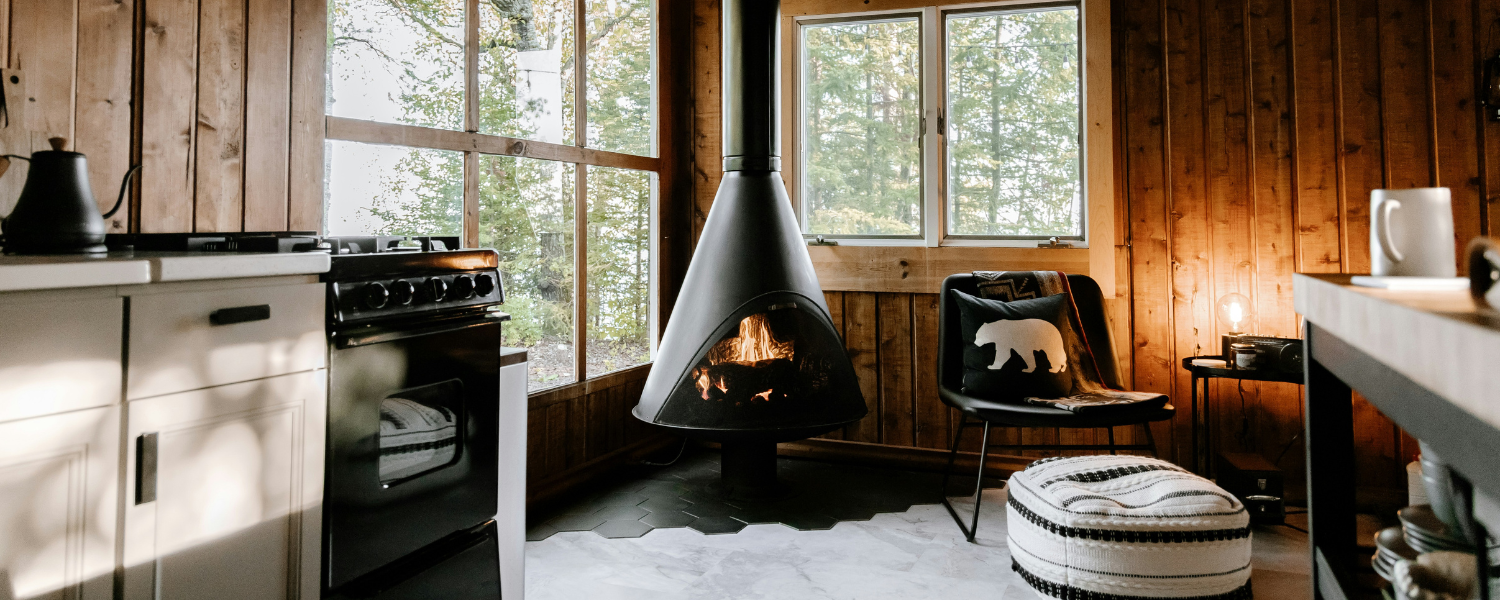
Practical tips for implementing Hygge
Now that you've grasped the fundamental principles of Hygge design, it's time to bring this enchanting concept to life within your own four walls. It's not just about knowing – it's about doing, right? Let's delve deeper into the practical steps that will turn your understanding of Hygge into a cozy reality in your home.
DIY Hygge projects
Hygge is very much about your personalized tastes and experience, so DIY decor is a great way to showcase it. However, it doesn’t need to be anything complex. Simple yet charming projects like crafting personalized photo frames, creating hand-painted canvases, or making unique wall hangings from driftwood and twine. Think about DIY textiles as well – learn to knit your favorite throw, sew plush cushions, or even make your own cozy blankets. These additions will infuse your home with a cozy Hygge vibe.
Hygge in different rooms
Bedroom
- Ambient lighting. Invest in warm, dimmable lighting or opt for fairy lights to create a relaxing atmosphere. Use lamps with soft, diffused light for bedtime reading.
- Layered bedding. Add layers to your bedding with a soft duvet, cozy throw blankets, and plump cushions. Choose soothing colors and natural fabrics for a snug feel.
- Declutter nightstands. Keep only essential items on your nightstand to maintain a serene environment. Consider adding a small plant or a scented candle for a touch of calmness.
- Hygge wallpaper for bedroom. Wallpaper is a great way to set the tone in a hygge-inspired bedroom. Consider wallpapers with soft, gentle motifs and a calm color palette that brings you closer to nature. Here are some examples for your inspiration: Curved White Lines, Forest Dream, and Banana Leaves.
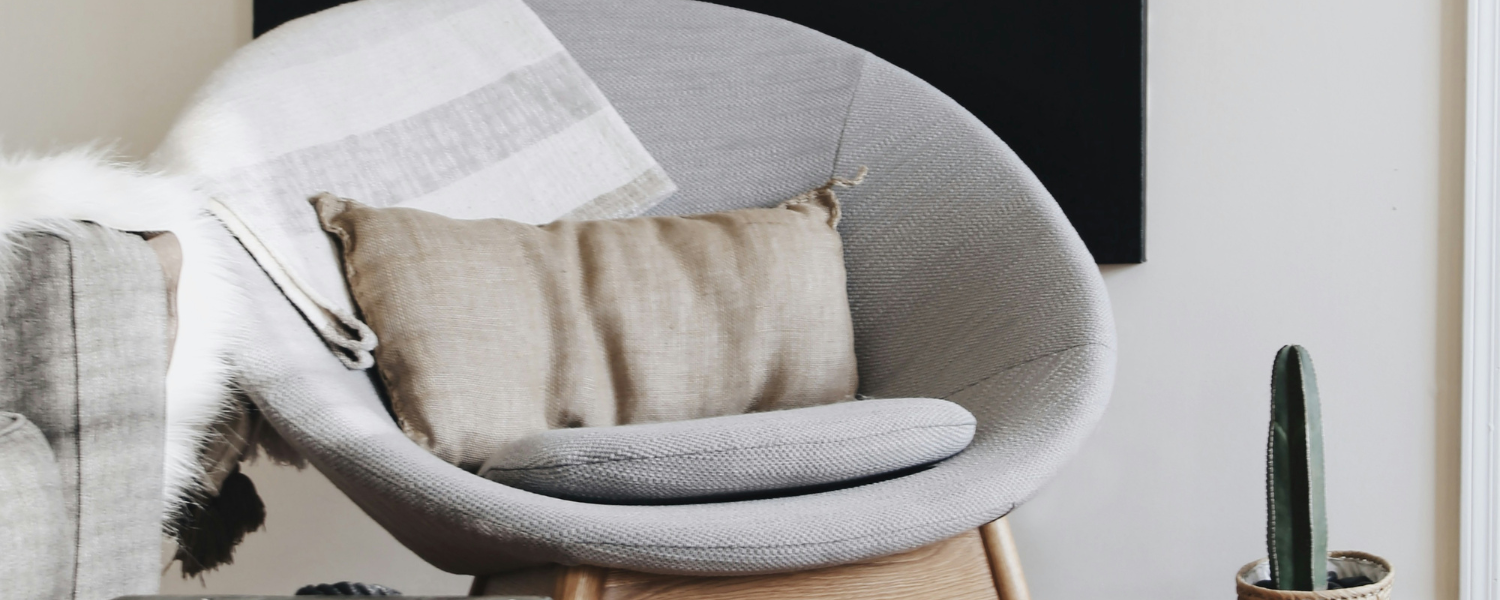
Living room
- Cozy seating. Create intimate seating areas with comfortable sofas or armchairs facing each other to encourage conversation.
- Soft textures. Incorporate soft textures like plush rugs, knit throws, and velvet cushions for added comfort.
- Entertainment hub. Designate a corner for books, board games, or a cozy reading nook to encourage relaxation and family time.
- Hygge wallpaper for the living room. Consider adding an element of joy to your living room by incorporating a hygge wallpaper. Think of light but fun patterns showcasing earthy tones – soft greys, warm browns, and calming greens. Here are some great examples: Curved Sage Lines, Modern Zigzag, and Abstract Waves.
- Festive decorations (when applicable). Embrace the spirit of Hygge by adorning the living room with subtle and cozy holiday decorations, if there's a festive occasion. Consider string lights, garlands, or seasonal ornaments that complement the room's warmth and comfort.
Kitchen
- Warm lighting. Install warm-toned lights or add under-cabinet lighting to create a cozy ambiance, especially during meal prep or gatherings.
- Communal seating. Include a cozy dining area with comfortable chairs or benches where everyone can gather comfortably.
- Natural elements. Display fresh herbs or small potted plants on windowsills or countertops to add a touch of nature and warmth.
Hygge on a Budget
Hygge isn't about breaking the bank. It's about creating warmth and comfort in simple, affordable ways. There are numerous options for how to infuse Hygge into your home without splurging.
Start by exploring thrift stores where hidden treasures await. These are perfect for upcycling into Hygge-inspired decor. Additionally, explore flea markets for unique and affordable finds like vintage lamps, cozy blankets, knick-knacks like decorative trays or vases, and rustic furniture. Another idea – book markets. Those are ideal for discovering second-hand books that can be a part of your Hygge haven. Find novels, poetry collections, or classic literature to create a cozy reading nook. Old books also serve as charming decor pieces when stacked or displayed creatively.
Since Hyyga is all about simplicity and minimalism, you don’t need luxurious decor or furniture pieces. Look for sturdy materials and sleek, timeless designs. You can collect these elements over time and use them for years to come!
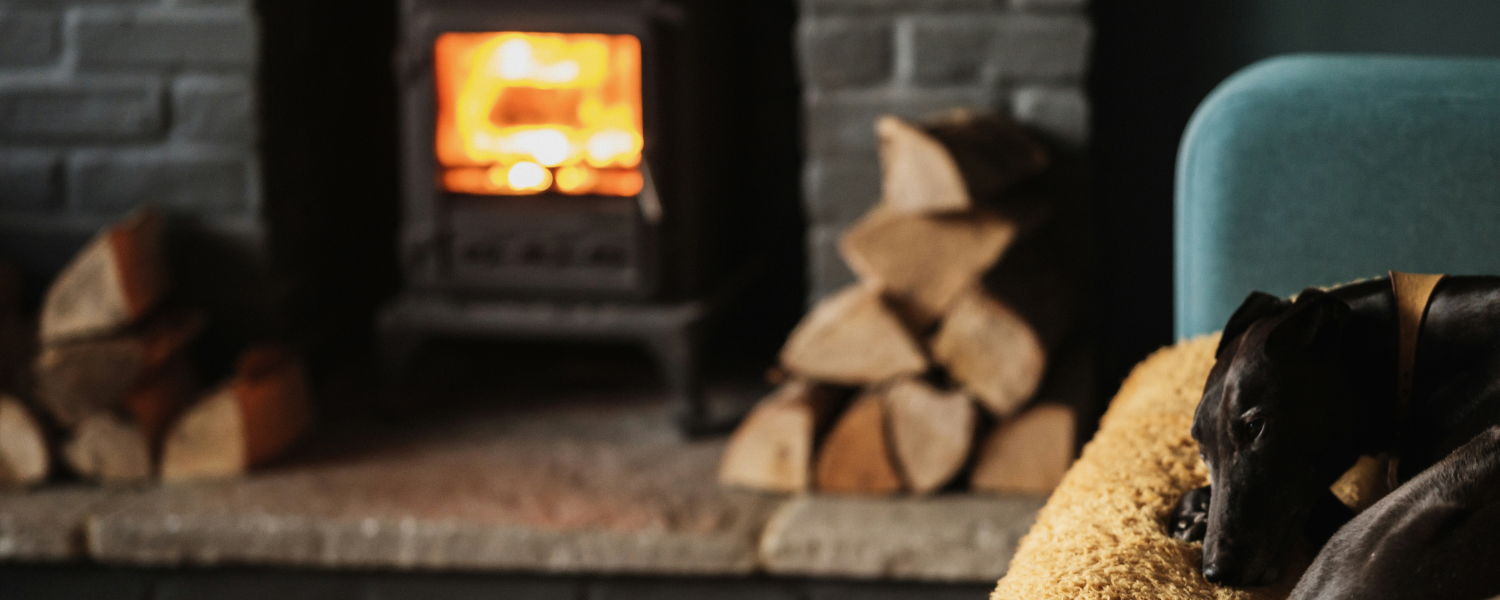
In conclusion
Remember it's all about celebrating the small things that bring joy – Hygge is about creating spaces that feel warm and peaceful. So, whether it's using soft blankets, gentle lights, or just taking a moment to relax, you're turning your home into a comfy retreat. Let your home reflect the happiness found in everyday moments as you embrace the Hygge spirit!


























